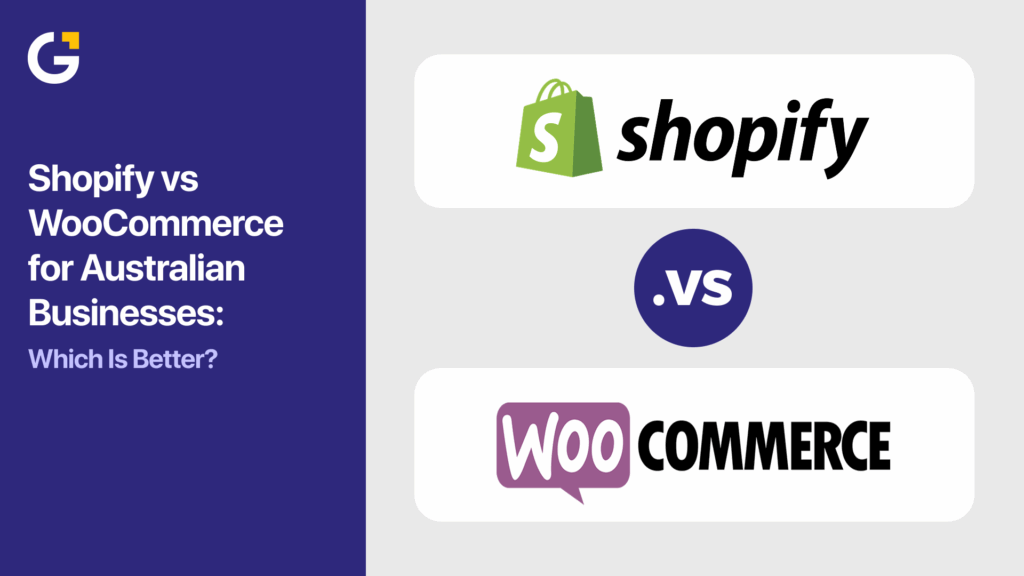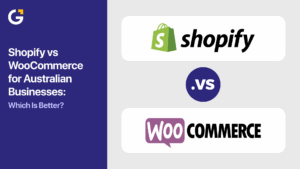Shopify vs WooCommerce for Australian Businesses: Which Is Better?
If you run a small to medium-sized business in Sydney, Melbourne, or Brisbane and you’re thinking about launching or upgrading your online store, you’ve probably come across the terms Shopify vs WooCommerce. The question on your mind might be something like “which platform will give you the best value, easiest setup, and strongest online results for your market?”
In this article, we’ll compare Shopify and WooCommerce for Australian businesses, using clear examples, latest data, and actionable insights, so you can make a confident choice and move forward. Whether you want a simple launch or a highly customised shop, we’ll cover the key differences and what they mean for you.
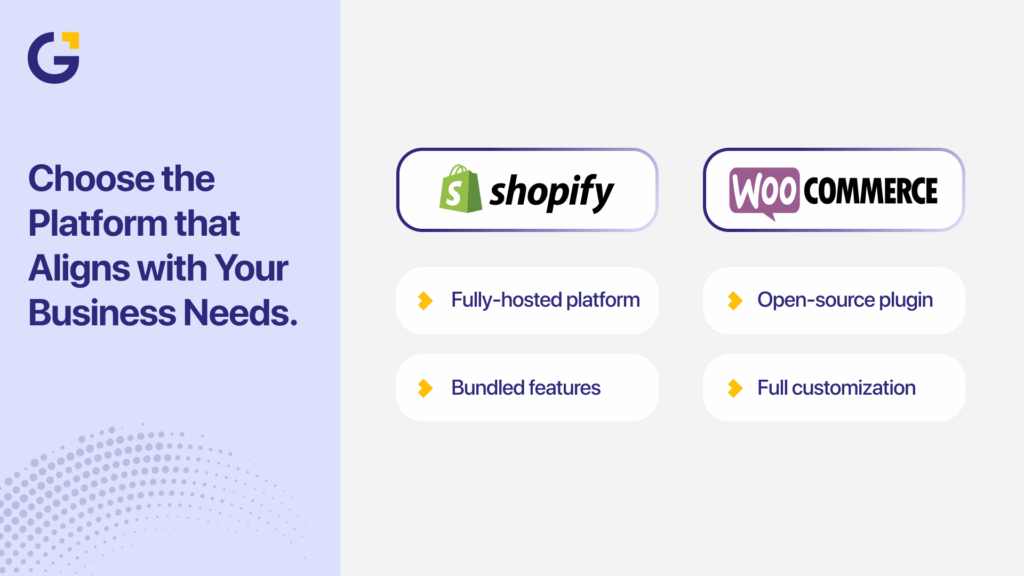
Platform Overview
What is Shopify?
What is WooCommerce?
WooCommerce is an open-source e-commerce plugin for WordPress. Once you install WordPress on your hosting, you can add WooCommerce, then select a theme and extensions. It gives you full control over your website’s design, hosting, and functionality, allowing complete ownership of your online store. Worldwide, WooCommerce powers a significant share of online stores, according to data from Soax research.
For example, a Sydney-based content-rich retailer that already runs WordPress might add WooCommerce to their site and integrate blogging, SEO, and custom product flows.
What are the Differences between Shopify and WooCommerce
Let’s compare key areas where Shopify and WooCommerce diverge: cost model, control, host/maintenance, and ecosystem.
- Hosting & setup: Shopify handles hosting, site speed, SSL, and updates. WooCommerce means you choose hosting, manage updates and security yourself (or hire help).
- Control & flexibility: WooCommerce offers greater customisation (themes, plugins, custom code). Shopify constrains some code and uses its ecosystem, but it is simpler.
- Maintenance & tech burden: Shopify asks for minimal everyday maintenance; WooCommerce requires you to update WordPress core, plugins, theme, hosting, etc.
- Ecosystem & apps: Based on Electro IQ data, Shopify has an App Store with 8,000+ apps. WooCommerce has a plugin ecosystem of tens of thousands.
- Cost model: Shopify has monthly fees + transaction fees (unless you use Shopify Payments). WooCommerce itself is free, but you pay for hosting, domain, SSL, extensions, and potentially custom dev.
Pricing & Cost Comparison (Australia-Specific)
When choosing between Shopify vs WooCommerce for small business eCommerce in Australia, cost and value matter a lot.
Shopify (Australia)
- Basic plan typically starts around AUD $39 per month (varies with currency & plan).
- For example, Shopify’s official pricing starts at US $39 per month for the Basic plan, though total monthly costs can range from US $50 to US $150 once apps, premium themes, and payment fees are included.
Plus transaction fees if you don’t use Shopify Payments; local gateway fees still apply in Australia.
WooCommerce (Australia)
- The WooCommerce plugin is free to install on WordPress, but you’ll need to pay for hosting (say AUD $10–50/month for a small store), domain, SSL, premium theme, plugin licences, security/maintenance.
- One source lists a typical WooCommerce monthly cost of around US$30–60 (~AUD $45–90) excluding dev hours.
Cost-comparison mini-scenario
Let’s compare how Shopify and WooCommerce stack up in real-world costs for a typical Australian small business setting up an online store.
Platform | Monthly Cost | Hidden/Extra Costs |
Shopify | Around AUD $60 (basic) | Add-ons, app fees, transaction fees, and premium themes |
WooCommerce | Around AUD $45–90 + hosting | Dev/maintenance, plugin updates, security, speed tuning |
Example: A Melbourne jewellery brand may estimate AUD $720/year for Shopify (basic plan) vs AUD $540 + dev hours for WooCommerce, but if the WooCommerce store needs frequent customisations, dev costs can accumulate.

Ease of Use & Setup
If you’re the business owner or marketing manager and not a full-time developer, ease of launch matters.
- Shopify: Quick setup. Choose a theme, add products, connect an Australian payment gateway (e.g., Afterpay, PayPal, Stripe), and you’re ready. Ideal for “get online fast”.
- WooCommerce: Setup takes more steps. You need hosting, WordPress install, theme, WooCommerce plugin, configure shipping/taxes, and tune speed. More flexible but steeper learning curve.
According to the review site WebsiteBuilderExpert:
“Shopify’s setup tools make it quick and easy to add a large inventory, whereas WooCommerce requires coding and third-party hosting and domain purchase.”
Scenario: A Brisbane café chain may pick Shopify if it wants to roll out online ordering quickly. A Sydney book retailer with an existing WordPress site may choose WooCommerce to keep content integration and blog control.
Design & Customisation Options
Design matters for brand and conversion. Here’s a comparison table for Shopify vs WooCommerce.
Feature | Shopify | WooCommerce |
Themes available | 100+ free & paid themes; mobile-friendly | Thousands of WordPress themes and many WooCommerce-specific templates |
Custom code access | Liquid templates, limited access on lower plans | Full access to PHP, CSS, HTML, and highly customisable |
Third-party plugins/apps | Large App Store; some cost extra | Huge plugin ecosystem; many free; some require dev work |
Integrations (AU-specific) | Regional gateways (Stripe, Afterpay, Zip) + shipping integration | Supports same or more; plus WordPress plugins for blog, membership, etc |
Design flexibility scenario | A Sydney fashion brand wants a sleek mobile-first theme and picks Shopify | A Melbourne craft supply store wants custom filtering, a membership area, a blog, and chooses WooCommerce |
Payment Gateways & Checkout Experience
Checkout experience impacts conversion and cart abandonment.
- Shopify: Offers integrated payments through Shopify Payments (though in Australia, you might still use Stripe/Afterpay and other third-party payment services). Pre-built checkout flow, fast.
- WooCommerce: You select your own gateway plugin (Stripe, PayPal, Afterpay, etc.). More flexibility, but you need to maintain plugin compatibility.
Scenario: A Perth health-supplement store needs Afterpay, Klarna, and subscription billing; both platforms support this, but WooCommerce may offer more custom billing plugins.
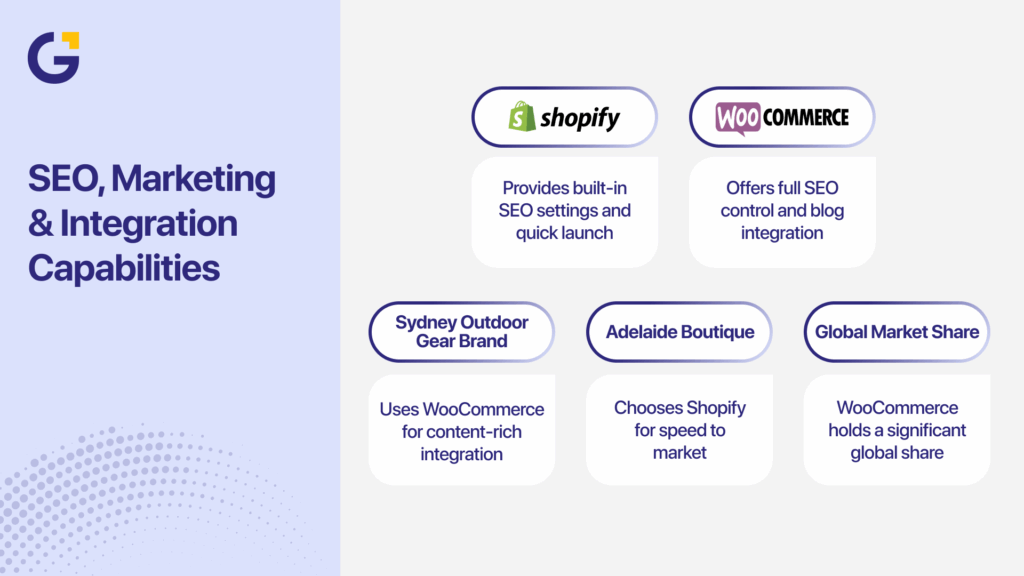
SEO, Marketing & Integration Capabilities
Your ability to be found online is essential. Here’s how each platform stacks up for SEO, especially in the Australian market.
- WooCommerce (via WordPress) provides full control over URL structure, metadata, site architecture, and blog integration, beneficial for content-rich stores.
- Shopify includes built-in SEO settings (titles, alt-text, meta-description) and a simpler site structure, good for quick launches.
- Example scenario: A Sydney outdoor gear brand uses WooCommerce so they can integrate a blog, gear reviews, and how-to guides (supporting “grow faster & higher than your competitor”).
- Another business, an Adelaide boutique, chooses Shopify because it prioritizes speed to market and fewer SEO management headaches.
Important stat: Globally, WooCommerce still holds a large share of e-commerce stores, 39.05% according to recent data.
Thus, for Australian SMEs who plan an SEO-driven strategy, WooCommerce is strong, but Shopify is still a major contender with strong usage in Australia.
Real-World Examples
Here’s how Australian businesses have chosen between Shopify and WooCommerce in real situations:
A Sydney fashion boutique needed to launch fast with a mobile-first design and Afterpay integration. Shopify allowed them to get online within four weeks, providing a clean layout and smooth checkout with minimal maintenance.
In contrast, a Melbourne craft supplies store already had a WordPress blog and wanted eCommerce with wish lists and memberships. WooCommerce was the natural choice, letting them integrate sales with content and customer loyalty features, though it required more ongoing management.
Meanwhile, a Brisbane supplement brand planned for international growth with multi-currency support and subscriptions. They selected WooCommerce for its flexibility and control, intending to migrate to Shopify Plus later as their global sales expand.
Each case shows there’s no one-size-fits-all solution. The right platform depends on your goals, setup, and how hands-on you want to be with your store.
Pros & Cons Summary
Here’s a quick table summarising key pros and cons of Shopify vs WooCommerce for Australian SMEs.
Platform | Key Pros | Key Cons |
Shopify | Fast to launch; hosting included; easy checkout | Monthly costs, less full control, app fees add up |
WooCommerce | Full control; rich plugin ecosystem; strong SEO capabilities | Requires hosting & maintenance; steeper learning curve |
Verdict – Which Platform Is Right for You?
If you’re asking “Shopify vs WooCommerce for Australian businesses”, here’s a simple guide:
- Choose Shopify if you want to launch fast, don’t want to manage hosting / updates, and prefer a simpler all-in-one package.
- Choose WooCommerce if you already use WordPress, plan to build rich content, need full customisation, and have the technical or agency support to maintain it.
- For many Australian SMEs, the decision comes down to whether you prioritise speed & simplicity (Shopify) or control & growth-flexibility (WooCommerce).
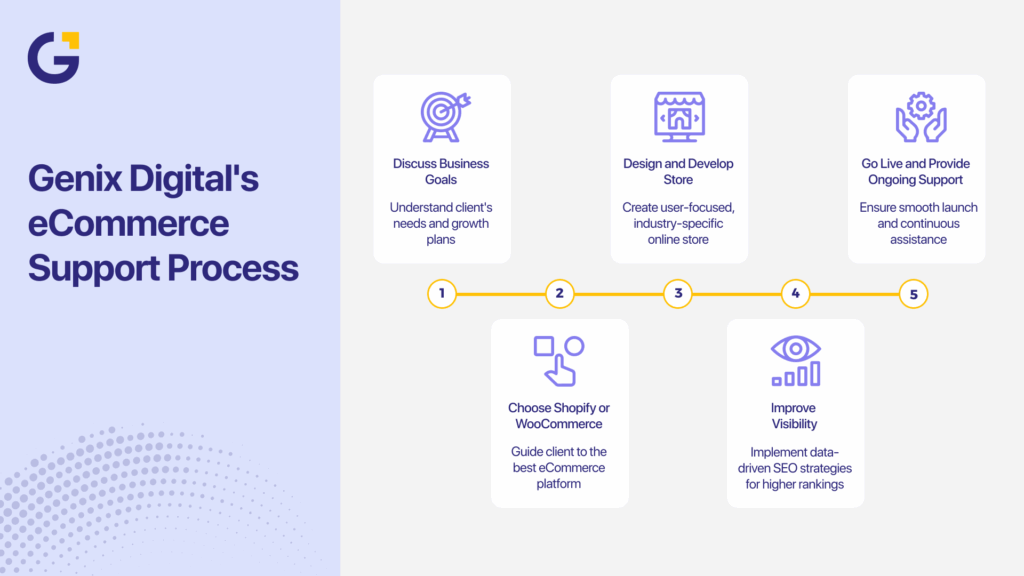
How Genix Digital Can Help
Choosing between Shopify and WooCommerce ultimately depends on your business goals, technical comfort, and growth plans. Shopify offers simplicity, reliability, and speed, while WooCommerce provides greater flexibility, control, and long-term scalability for WordPress users. Both platforms can deliver outstanding results when built and optimised correctly, helping Australian businesses expand their online presence and drive consistent sales.
At Genix Digital, we help Australian SMEs make the right eCommerce choice with confidence. Our team builds, customises, and optimises online stores on both Shopify and WooCommerce, tailoring every design, feature, and SEO strategy to your specific industry and target market. Whether you’re launching a new store or improving an existing one, we create user-focused, data-driven solutions that turn browsers into loyal customers.
Compare options and talk to an expert today. Let’s design the perfect eCommerce solution for your business growth.
Internal Link Ideas
- website’s design – https://genixdigital.com/services/website-development-website-design/
- eCommerce in Australia – https://genixdigital.com/services/website-development-ecommerce/
- SEO management – https://genixdigital.com/services/seo/
- Genix Digital – https://genixdigital.com/
- talk to an expert today – https://genixdigital.com/contact-us/
External Source Ideas
- StoreLeads – https://storeleads.app/reports/shopify/AU/top-stores\
- Soax research – https://soax.com/research/ecommerce-platform-market-share
- Electro IQ – https://electroiq.com/stats/shopify-vs-woocommerce-statistics/
- Shopify’s official pricing – https://electroiq.com/stats/shopify-vs-woocommerce-statistics/
- Shopify Payments – https://help.shopify.com/en/manual/your-account/manage-billing/billing-charges/types-of-charges/third-party-charges/third-party-transaction-fees
- WooCommerce – https://woocommerce.com/payments/australia/#:~:text=Simplified%20payments%20for%20stores%20in,Get%20started%20for%20free
- WebsiteBuilderExpert – https://www.websitebuilderexpert.com/ecommerce-website-builders/comparisons/woocommerce-vs-shopify/
Summary of Links Used
- website’s design – https://genixdigital.com/services/website-development-website-design/
- eCommerce in Australia – https://genixdigital.com/services/website-development-ecommerce/
- SEO management – https://genixdigital.com/services/seo/
- Genix Digital – https://genixdigital.com/
- talk to an expert today – https://genixdigital.com/contact-us/
- StoreLeads – https://storeleads.app/reports/shopify/AU/top-stores\
- Soax research – https://soax.com/research/ecommerce-platform-market-share
- Electro IQ – https://electroiq.com/stats/shopify-vs-woocommerce-statistics/
- Shopify’s official pricing – https://electroiq.com/stats/shopify-vs-woocommerce-statistics/
- Shopify Payments – https://help.shopify.com/en/manual/your-account/manage-billing/billing-charges/types-of-charges/third-party-charges/third-party-transaction-fees
- WooCommerce – https://woocommerce.com/payments/australia/#:~:text=Simplified%20payments%20for%20stores%20in,Get%20started%20for%20free
- WebsiteBuilderExpert – https://www.websitebuilderexpert.com/ecommerce-website-builders/comparisons/woocommerce-vs-shopify/
FAQ
Your Questions, Answered
Which is more popular, WooCommerce or Shopify?
WooCommerce currently powers more websites worldwide, thanks to its WordPress integration. However, Shopify leads in active paid stores because of its hosted model and ease of use.
Is Shopify worth it for beginners?
Yes. Shopify is ideal for beginners who want to launch an online store quickly without technical setup. It provides hosting, templates, and 24/7 support, making it a strong option for new eCommerce owners.
How much does WooCommerce cost compared to Shopify?
WooCommerce is free to install but requires paid hosting, domains, and extensions. Shopify’s Basic plan starts at US $39 per month (around AUD $60), covering hosting and maintenance. WooCommerce can be cheaper long-term if you already use WordPress.
Is it better to use WooCommerce or Shopify?
It depends on your goals. Shopify is best for fast setup and simplicity, while WooCommerce is ideal for those wanting control over design, hosting, and SEO. Both can be highly profitable when optimised professionally.
Can I move from WooCommerce to Shopify?
Yes. Many businesses migrate to Shopify for simplicity and managed hosting. Genix Digital offers seamless migration services to transfer your products, design, and SEO data safely between platforms.


